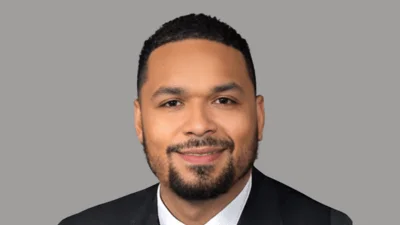Walter “Ted” Carter Jr. President at Ohio State University | Official website
Walter “Ted” Carter Jr. President at Ohio State University | Official website
Researchers at The Ohio State University Wexner Medical Center and College of Medicine have received a $19.5 million grant from the National Institutes of Health (NIH) to lead a new study aimed at improving suicide risk prediction across the United States.
The project, set to begin recruiting participants in January, will enroll approximately 13,500 adults between the ages of 18 and 55 from around the country. About 4,000 participants will come from Ohio, Michigan, and Indiana. The study will focus on individuals who have recently visited a health care provider and will include people with varying levels of suicide risk.
Of these participants, roughly 4,200 considered at higher risk—such as those seen in clinics for depression, PTSD, psychosis or risk for psychosis, sleep disorders, pain management, or those who are underinsured—will be specifically targeted to represent moderate to high suicide risk groups. Participants will be monitored over six weeks to better understand which factors contribute to ongoing suicide risk after a medical visit.
Jessica Turner, PhD, principal investigator and cognitive neuroscientist in Ohio State’s department of psychiatry and behavioral health, explained the study’s approach: “We aim to understand how people experience suicide risk and manage challenges. By applying dynamical systems modeling and AI, we hope to analyze this data and predict when individuals may be most at risk for a suicide attempt,” she said. “This study will help us gain a better understanding of who goes on to make a suicide attempt, and when.”
The ARTEMIS study (Analyses to Reveal Trajectories and Early Markers of Imminent Shifts in Suicidal States) plans to examine several aspects that could affect suicide risk. These include cognitive tasks that measure problem-solving abilities; smartphone sensor data tracking activity levels; and surveys about sleep patterns and mental health symptoms.
The research team includes Melanie Bozzay (suicide and digital phenotyping), Jay Fournier (depression and predictive modeling), Scott Langenecker (virtual cognitive assessment and bipolar disorder), and Ivy Tso (psychosis and neurocognitive assessment). The initiative also involves partners such as the University of Utah for computational modeling work; the University of Michigan for expertise on bipolar disorder; and Indiana University focusing on psychosis.
“ARTEMIS will revolutionize the strategies we have available for clinicians to detect urgent suicidal crises,” said Bozzay. “These efforts are vital to help providers in our health care systems prevent suicides by targeting lifesaving interventions to the right person, at the right time.”
K. Luan Phan, MD, chair of psychiatry and behavioral health at Ohio State noted that ARTEMIS builds on prior large-scale recruitment experience as well as expertise in longitudinal assessment techniques: “It also reflects our ongoing research efforts in suicide, trauma, psychosis, substance use and mood disorders, making use of connections and participants from the State of Ohio Adversity and Resilience (SOAR) study,” he said.
The SOAR Study is a statewide initiative led by Ohio State Wexner Medical Center aiming to uncover causes behind persistent emotional distress issues such as suicide or drug overdose. Initially funded by a $20 million grant from The Ohio Department of Mental Health and Addiction Services, SOAR’s continuation relies on philanthropic support along with external grants like ARTEMIS.
Andrew Thomas, MD—chief clinical officer at Ohio State Wexner Medical Center—said: “ARTEMIS builds on the strong foundation of the SOAR Study – both studies advance our understanding and treatment of mental health issues through the measurement of longitudinal patient risks and outcomes.” He added: “We appreciate that the NIH values the research we do at Ohio State and anticipate we will have a number of additional grants in the future that leverage our SOAR infrastructure and expertise as we advance solutions to help save lives.”





 Alerts Sign-up
Alerts Sign-up